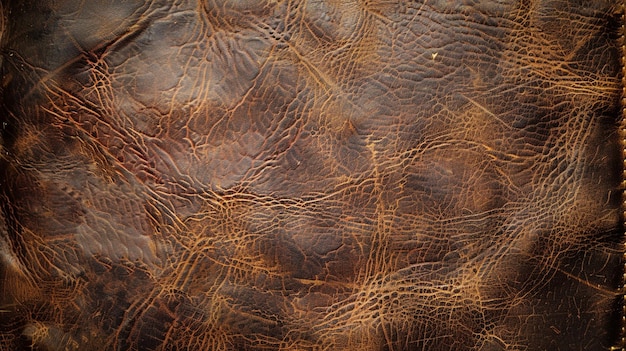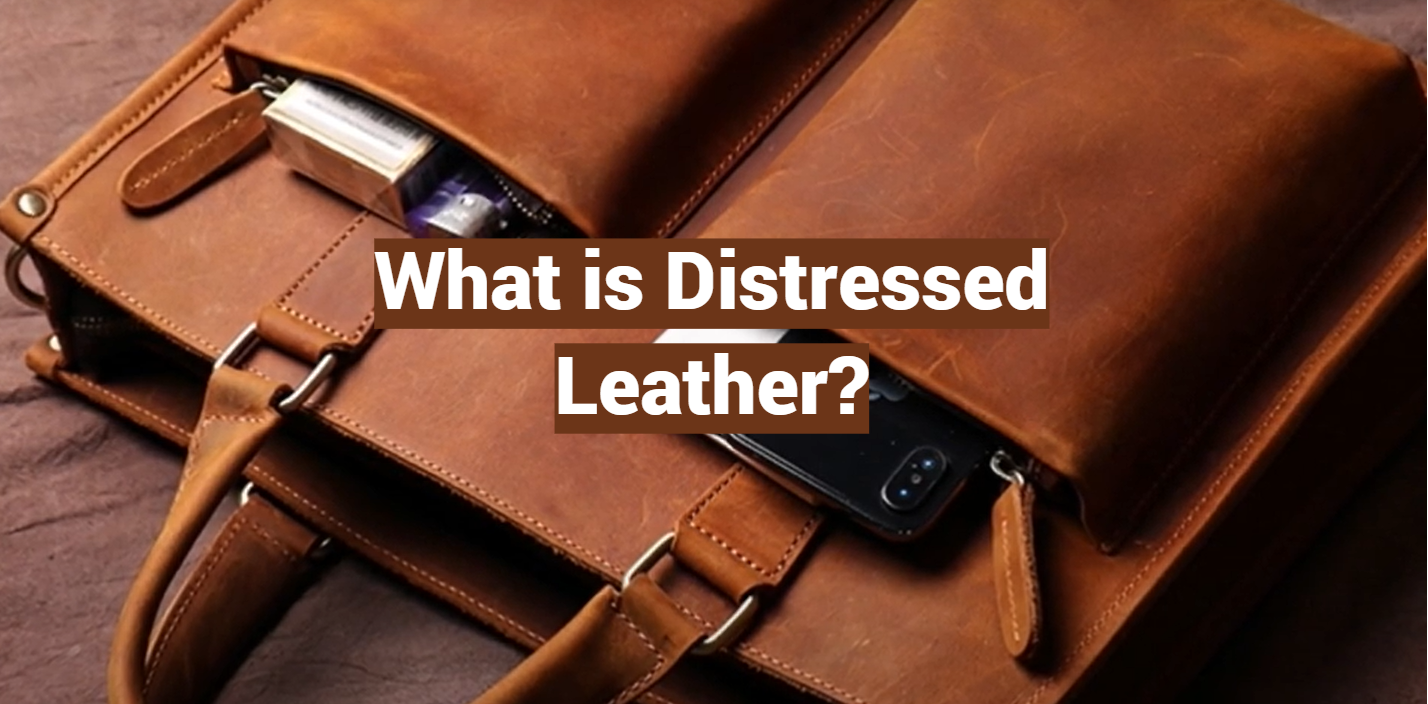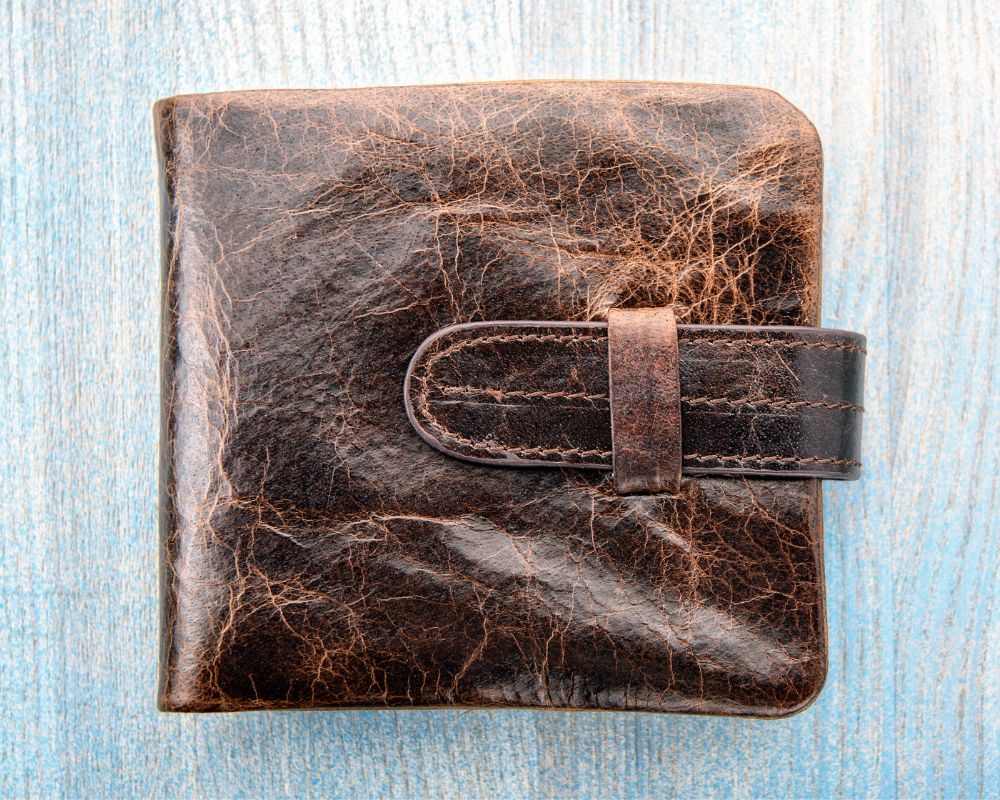Distressed leather is a type of full-grain leather intentionally treated to look aged and weathered, creating a unique, one-of-a-kind vintage aesthetic.

Table of Contents

- What Exactly Defines Distressed Leather?
- How Is Distressed Leather Made? The Art of Intentional Aging
- Where Does This Unique Leather Come From?
- Why Choose Distressed Leather Goods?
- How Does Distressed Leather Compare to Other Types?
- Proper Care and Maintenance for Your Distressed Leather
What Exactly Defines Distressed Leather?
Distressed leather is more than just a material; it is a canvas that tells a story from the moment it is created. Unlike pristine, uniform leathers, its appeal lies in its imperfections. It is specifically processed to mimic the natural wear and tear that would take decades to develop, resulting in a product that feels both new and timeless. The core idea is to imbue the leather with character, giving it a rich, varied appearance that includes scuffs, wrinkles, and color variations. This process ensures that no two distressed leather items are exactly alike.

This type of leather is often celebrated for its rugged, vintage look. The “distressing” is not damage but a carefully curated finish. It speaks to a desire for authenticity and durability, moving away from mass-produced perfection and toward items with a soul and a history. The finish is designed to evolve, meaning any new scratches or marks you add simply blend into the existing pattern, enhancing its unique character over time.
The Philosophy Behind the Worn-In Aesthetic
The worn-in aesthetic is rooted in a philosophy that values history, utility, and individuality. It’s an appreciation for items that show signs of a life well-lived. In a world of fast fashion and disposable goods, distressed leather represents permanence and resilience. The initial “damage” is a starting point, a foundation upon which the owner’s own experiences will be layered. Each journey, commute, or adventure adds to its narrative, deepening the color and texture.
This approach transforms a functional item, like a bag or a wallet, into a personal artifact. It’s not meant to remain static or perfect. Instead, it is expected to absorb the oils from your hands, soften with use, and develop a lustrous sheen known as a patina. This evolution is the ultimate goal, making the item uniquely yours.
Key Characteristics: More Than Just Scratches
Identifying distressed leather involves looking for a specific set of visual and tactile cues. The surface is rarely uniform; instead, it presents a dynamic landscape of textures and tones. You will notice a deliberate inconsistency in the dye, with lighter and darker areas that create a sense of depth. Scratches, scuffs, and wrinkles are not flaws but integral features of its design.
The texture is often remarkably soft and supple to the touch, a result of the finishing processes that break down the leather’s initial stiffness. It often has a matte or satin finish rather than a high-gloss shine, which contributes to its understated, rustic charm. When you bend or fold the leather, you may notice the color lightens in the crease, a characteristic often found in high-quality waxed or oiled leathers known as a “pull-up” effect.
How Is Distressed Leather Made? The Art of Intentional Aging
Creating the perfectly imperfect look of distressed leather is a multi-step process that requires both skill and artistry. It is not about random damage but a controlled application of techniques to achieve a specific vintage effect. The goal is to accelerate the aging process in a way that enhances the leather’s natural beauty without compromising its structural integrity.
The Foundation: Starting with High-Quality Hides
The entire process begins with the selection of the right raw material. Artisans almost exclusively use full-grain or top-grain leather as the base. Why? Because these are the highest quality cuts from a hide, retaining the dense, strong outer layer known as the grain. This inherent durability is crucial, as the leather must be able to withstand the physical and chemical treatments involved in the distressing process without weakening. Using a lesser quality hide, like split or bonded leather, would result in a product that falls apart.
Mechanical Distressing Techniques
Once the hide is tanned, the physical aging process begins. Craftsmen employ various mechanical methods to create the signature worn-in look. These techniques are applied by hand or with specialized machinery to ensure a natural, non-uniform appearance.
- Tumbling: Large pieces of leather are placed in a rotating drum, often with stones or other objects, to soften the material and create random wrinkles and grains.
- Sanding and Abrading: Specific areas of the leather are lightly sanded or brushed to create a scuffed look, mimicking years of use. This is often focused on edges and seams where wear would naturally occur.
- Stretching and Rolling: The leather is manually stretched, folded, and rolled to break up the stiffness of the fibers and introduce natural-looking creases.
Chemical and Finishing Processes
After the mechanical work, special finishes are applied to enhance the aged effect and protect the leather. This stage is critical for achieving the final color and texture.
- Waxing and Oiling: A heavy coat of wax or natural oils is applied to the surface. This not only nourishes the leather but also creates the “pull-up” effect, where the color lightens when stretched. This finish also helps seal the leather and provides a degree of water resistance.
- Specialized Dyeing: Instead of a flat, even color, artisans may use techniques like rubbing or sponging to apply dye unevenly. This creates variations in hue and saturation that contribute to the vintage appearance.
- Heat Application: In some cases, heat is used to “burnish” the leather, darkening certain spots and adding another layer of visual complexity.
Where Does This Unique Leather Come From?
The journey of distressed leather begins long before it is shaped into a final product. The quality of the end item is directly tied to the source of its raw materials and the expertise of the craftspeople who transform it. Understanding its origins provides a deeper appreciation for the final product.
Sourcing the Right Raw Materials
The creation of premium distressed leather goods starts with ethically and sustainably sourced hides. Full-grain hides from animals like buffalo and goats are particularly prized for this process. Buffalo leather is known for its thick, rugged grain and exceptional strength, making it an ideal candidate for distressing techniques that require a durable base. Goat leather is lighter and more supple but still incredibly resilient, offering a different kind of softness and flexibility.
The environment in which the animals were raised can also affect the hide’s quality. Hides with natural markings such as scars or insect bites are often preferred for distressed leather, as these “imperfections” are incorporated into the design to enhance its authentic, rustic character.
Geographic Hubs for Leather Craftsmanship
While leather processing happens worldwide, certain regions are renowned for their long-standing traditions in tanning and leatherwork. Countries in South Asia, such as India, have centuries-old expertise in vegetable tanning and handcrafted leather finishing. These hubs are often home to artisanal communities where skills are passed down through generations. These craftsmen possess an intuitive understanding of how to work with the material, applying distressing techniques by hand to bring out the unique personality of each hide. Their meticulous work ensures that the final product is not just aged in appearance but also crafted with care and built to last.
Why Choose Distressed Leather Goods?
Opting for a product made from distressed leather is a choice that balances aesthetics, durability, and practicality. It offers a distinct set of advantages that appeal to those who value items with character and longevity.
Unmatched Durability Meets Unique Style
Because distressed leather is made from full-grain hides, it retains the strongest and most durable part of the animal’s skin. This means that while it looks old, it has the strength and resilience of a brand-new, high-quality leather product. It resists tearing, stretching, and punctures far better than lower-grade leathers. This combination of a unique, pre-aged style with robust, long-lasting construction is its most compelling feature.
At Beldtura, we believe every bag should have a soul. Our handcrafted bags, made from the finest full-grain buffalo and goat leather, are designed to embrace this philosophy. They arrive with inherent character and are built to develop a rich, personal patina that reflects your unique journeys, embodying the perfect fusion of timeless style and rugged dependability.
The Beauty of a Developing Patina
One of the most celebrated qualities of distressed leather is its ability to develop a beautiful patina over time. A patina is the soft sheen and darkening that develops on the surface of high-quality leather through use and exposure to the elements. The distressing process gives this a head start, but the evolution continues with you. The oils from your hands, sunlight, and the way you handle the item all contribute to a patina that is completely unique to you, making the product a true one-of-a-kind.
Practical Advantages of a Pre-Worn Look
A significant practical benefit of distressed leather is its forgiving nature. With a pristine, glossy leather bag, the first scratch can feel like a disaster. With distressed leather, new scratches and scuffs simply blend into the existing texture, adding to its character rather than detracting from it. This makes it an excellent choice for everyday items like messenger bags, duffle bags, and backpacks that are subject to regular use. You can use your item without the constant worry of keeping it in perfect condition.
How Does Distressed Leather Compare to Other Types?
Understanding the differences between distressed leather and other common leather types helps in making an informed choice. Each has its own characteristics, benefits, and ideal applications.
| Feature | Distressed Leather | Standard Full-Grain Leather | Top-Grain Leather |
|---|---|---|---|
| Appearance | Aged, weathered, scuffs, color variations (pull-up effect). | Natural grain, minimal processing, may show natural marks. | Sanded and finished for a uniform, pristine look. |
| Durability | Extremely high (it is full-grain). Hides new scratches well. | Highest possible durability. The strongest type of leather. | Very durable, but slightly less so than full-grain as the top layer is sanded off. |
| Patina Development | Excellent. The process starts during manufacturing and continues with use. | Excellent. Develops a rich, deep patina over many years. | Develops a patina more slowly due to the protective finish. |
| Feel | Often very soft and supple from the start due to processing. | Can be stiff initially, softens significantly with use. | Feels smooth and consistent, often a bit colder to the touch. |
| Best For | Bags, jackets, and furniture where a vintage, rugged look is desired. | High-end belts, boots, and luggage that will last a lifetime. | Luxury handbags and car interiors where a uniform finish is preferred. |
Proper Care and Maintenance for Your Distressed Leather
While distressed leather is rugged and forgiving, proper care will ensure it ages gracefully and lasts for generations. The goal is not to keep it looking new but to nourish the hide so it remains strong and supple.
Routine Cleaning and Dusting
Regular maintenance is simple. Use a soft, dry cloth or a brush with soft bristles to wipe away any dust or dirt from the surface. For minor spills, use a slightly damp cloth and wipe the area gently. Avoid using harsh soaps or detergents, as they can strip the natural oils from the leather, causing it to dry out and crack.
Conditioning: The Secret to Longevity
Conditioning is the most important step in caring for distressed leather. Every 6-12 months, or whenever the leather starts to feel dry, apply a high-quality leather conditioner or cream specifically designed for oiled or waxed leathers. Apply a small amount with a clean cloth, working it into the leather in a circular motion. Let it sit for a few hours (or as directed by the product) to allow the hide to absorb the moisture, then buff off any excess with a clean, dry cloth. This replenishes the oils and waxes, keeping the leather flexible and protecting it from the elements.
What to Avoid When Caring for Your Item
To preserve the unique finish of your distressed leather, there are a few things to avoid. Do not use silicone-based products or household cleaners, as they can clog the pores of the leather and prevent it from breathing. Avoid over-exposure to direct sunlight or extreme heat, which can cause the color to fade and the leather to dry out prematurely. When storing your leather item, keep it in a cool, dry place and use a breathable dust bag instead of a plastic one.



